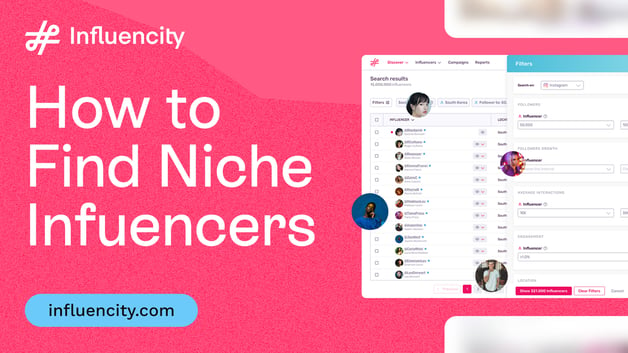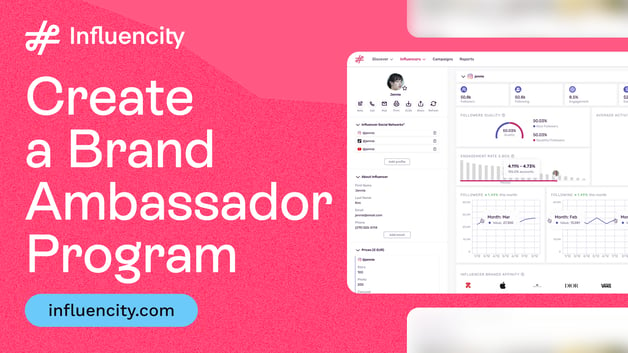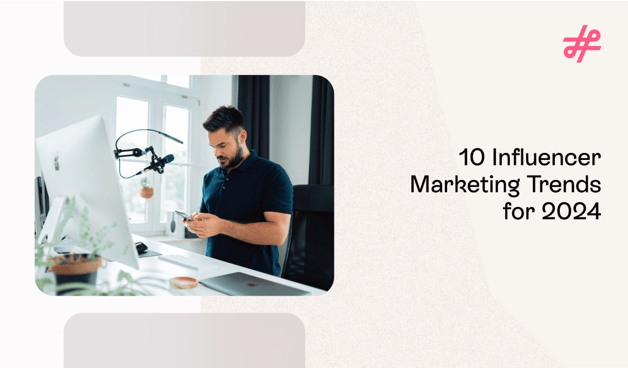Social Media
How Different Types of Social Media Influencers Can Impact Your Sales Strategy
Social Media
If you’re looking to boost your sales through influencer marketing, then it’s vital that you first understand the different types of social media influencers that are available and the specific characteristics that make them unique. That way, you can find the best fit for your brand and generate ROI with your campaigns.
In this article, we will explore different types of social media influencers and their impact on sales. Specifically, we will explore the characteristics and benefits of micro-influencers, macro-influencers, Key Opinion Leaders, and brand ambassadors. Whether you're seeking niche expertise, broad reach, or long-term brand advocacy, this guide will help you navigate the influencer landscape and make informed decisions to drive sales growth.
Let’s dive in.
The Power of Micro-Influencers in Niche Markets
Micro-influencers are individuals with a small but highly engaged social media following, typically ranging from a few thousand to tens of thousands of followers. Their followers often share common interests or niche passions, allowing micro-influencers to build strong communities and establish credibility within their specific areas of expertise.
One of the major advantages of microinfluencers is their ability to generate a level of trust that often surpasses that of larger influencers. This is because their audience perceives them as authentic and approachable individuals, not just celebrities.
The benefits of working with micro-influencers include higher levels of audience engagement, genuine connections, and a more targeted reach. Their smaller follower count often translates into more meaningful interactions, as they can engage with their audience on a personal level. Additionally, their voice holds high persuasive power within very defined niches, making it easier to promote specialized products or services. This makes microinfluencer campaigns highly effective for achieving real conversions and long-term customer loyalty. Moreover, micro-influencers are often far more affordable than macro-influencers, making them a cost-effective option for smaller brands with limited budgets.
Finally, collaborating with microinfluencers allows brands to experiment and adjust strategies more flexibly, leveraging the agility and creativity these creators often bring. This can be a key competitive advantage in dynamic and constantly evolving markets.
Macro-Influencers and Their Role in Brand Visibility
Macro-influencers have a larger social media following, often in the hundreds of thousands or even millions. They have gained widespread recognition and popularity, which gives them significant reach and influence across a broad audience. Macro-influencers are typically knowledgeabe in their field or have achieved celebrity status, making them highly sought after by brands, especially when it comes to promoting product launches through social media takeovers.
The benefits of working with macro-influencers include the ability to reach a wide audience quickly, increased brand visibility, and the potential for viral content. This is because their large follower base allows for greater exposure and brand awareness. Moreover, macro-influencers often have established partnerships with well-known brands, which adds credibility to their endorsements. However, it is important to consider that working with macro-influencers can come with higher costs and may result in less personalized engagement compared to micro-influencers. As a result, they are best suited to large-scale product launches, international brand awareness campaigns, and initiatives targeting a diverse consumer base.
Key Opinion Leaders: Authority That Drives Decisions
A Key Opinion Leader, or KOL, is a type of social media influencer who has established a reputation as an authority in a specific field or industry. KOLs possess in-depth knowledge, expertise, and credibility within their niche domains. These influencers are recognized for their thought leadership, experience, and expertise, making them highly influential among their followers and peers.
Collaborating with KOLs offers several benefits for brands. Firstly, their endorsement and recommendations carry significant weight, influencing the opinions and purchasing decisions of their dedicated followers. Secondly, partnering with KOLs allows brands to tap into their specialized knowledge and audience, reaching a highly targeted and relevant customer base. Thirdly, working with KOLs can help you position your brand as reputable and knowledgeable in a specific industry, enhancing brand credibility and trust. According to the "State of Influencer Marketing 2024" report by Influencer Marketing Hub, 70% of consumers trust recommendations from industry experts more than those from celebrities or mainstream influencers. This trust translates into higher conversion rates and a better return on investment for product awareness campaigns.
KOLs are also especially valuable in sectors like healthcare, technology, education, or finance, where authority and content accuracy are essential to building trust. As a result of all this, industry experts are the best choice for campaigns focused on educating and informing audiences, providing insightful reviews, sharing expert tips, and demonstrating the practical application of products or services within a specific industry context.
Authenticity and Endurance: The Value of Brand Ambassadors
Finally, we can’t discuss different types of social media influencers without mentioning brand ambassadors.
Brand ambassadors are individuals who have a strong, loyal connection with a brand and actively promote it on an ongoing basis. They are typically long-term partners who embody the brand's values, mission, and identity. They have a genuine passion for the brand, they can authentically represent its products or services, and they are dedicated to building strong relationships with the brand's audience.
Collaborating with brand ambassadors offers numerous advantages. Firstly, they provide consistent and authentic brand advocacy, helping to build trust and credibility among their followers. Secondly, brand ambassadors often have a strong presence in their communities, allowing for targeted and localized marketing efforts. Moreover, their long-term commitment to the brand fosters loyalty and ongoing support, generating repeat business and customer retention. Lastly, brand ambassadors can provide valuable feedback, insights, and suggestions for improving products or services, acting as a bridge between the brand and its customers. For all these reasons, brand ambassadors are best suited to brands and sales campaigns that prioritize long-term brand advocacy, relationship-building, and brand loyalty. They are particularly valuable for lifestyle, fashion, and beauty brands.
A clear example is Novak Djokovic with Lacoste, who, as a brand ambassador, authentically represents their elegant and sporty style, creating a genuine connection with a global audience passionate about sports and fashion.
Tools and Tactics to Power Your Influencer Strategy
Once you’ve identified the right type of influencer for your brand—whether it’s a micro-influencer, macro-influencer, KOL, or brand ambassador—it’s important to leverage the right tools and tactics to optimize execution and maximize results.
One particularly effective tactic, especially when working with micro-influencers or potential brand ambassadors, is gifting. This involves sending products to content creators free of charge, with no obligation for a formal collaboration. In return, many influencers share the products organically, generating authentic content that can drive engagement and brand awareness. Gifting not only helps you gain visibility but also allows you to test interest and build genuine relationships with creators, which can evolve into long-term paid partnerships.
In terms of tools, platforms like Influencity are essential for efficiently discovering, filtering, and analyzing influencers across multiple criteria, such as engagement rate, niche, language, and location. This data-driven approach helps brands select the most relevant influencers for their campaigns with confidence.
For ecommerce brands, integrating influencer campaigns with platforms like Shopify adds another layer of precision and scalability. Shopify enables you to generate unique discount codes or trackable links for each influencer, making it easy to monitor individual campaign performance and calculate ROI. This is particularly valuable when working with macro-influencers or during large-scale product launches, where traceability is critical.

Together, these tools and tactics enhance your influencer marketing strategy by making it more structured, measurable, and adaptable—empowering your brand to drive real business growth through meaningful creator collaborations.
Tags:
Social Media Influencers






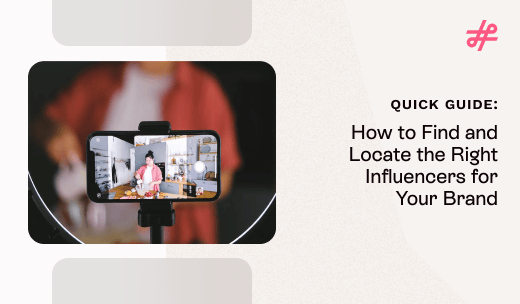



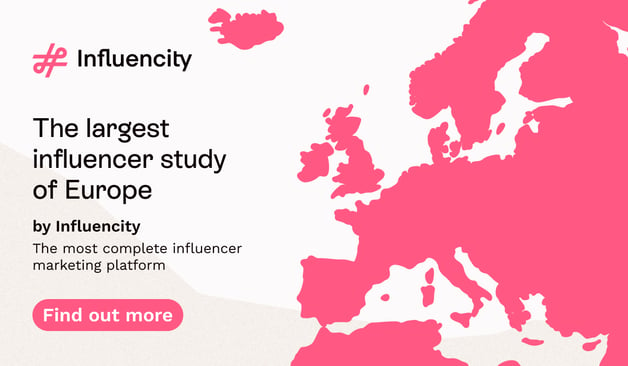




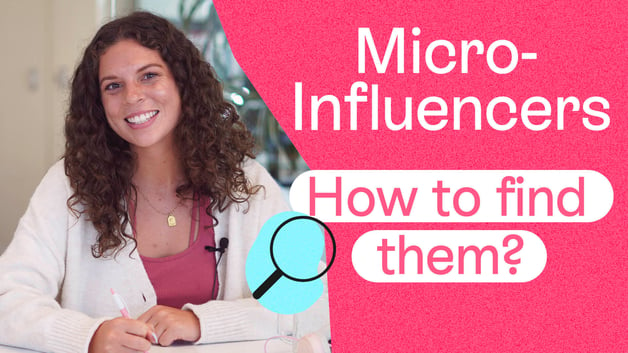




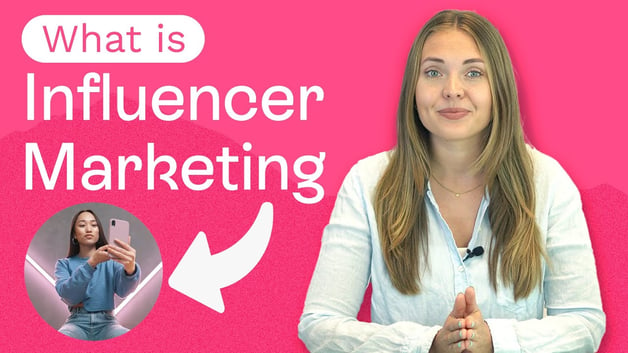

%20and%20How%20Can%20They%20Benefit%20Your%20Brand%20article.jpg?length=628&name=What%20Are%20Key%20Opinion%20Leaders%20(KOL)%20and%20How%20Can%20They%20Benefit%20Your%20Brand%20article.jpg)
